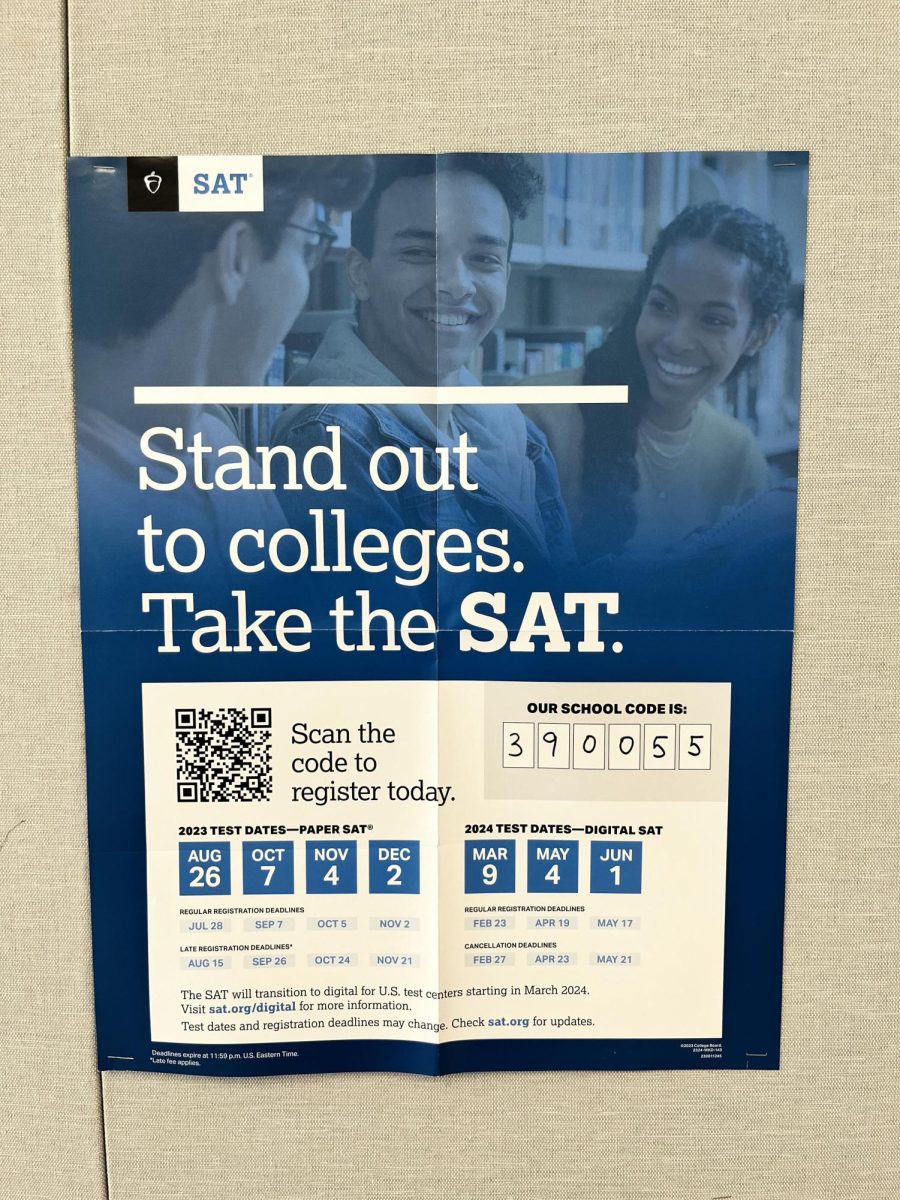When preparing for college, students will submit grades, class ranks, lists of extracurriculars as well as other information to help them stand out to university admissions. Along with this, some students will choose to take the Scholastic Aptitude Test (SAT) or the American College Test (ACT).
These tests are an inaccurate assessment of a student’s academic performance and should not be an integral part of university admissions. It is important to underline the issues associated with standardized testing in order to bring light to the issue.
The SAT is the more popular of the two tests. According to US News and World Report, 1.9 million students took the SAT as compared to 1.4 million students who took the ACT. The SAT was created by Carl Brigham and introduced by the College Board in 1929. Carl Brigham was notoriously racist, voicing his biases in favor of the “Nordic Race” and against African Americans, Mediterranean peoples and Eastern Europeans.
Minority racial groups still see a disadvantage even now. Due to socioeconomic factors and years of systemic racism, minority groups have a higher chance to be in lower income brackets. This translates to their test scores. Test scores for low income students of all race groups are noticeably lower than the scores of middle-to-high income students. With higher income, families can pay for more study materials and tutors that low income families may not be able to afford. Disparaging low income groups is only harmful and won’t help them succeed in college.
Adding further to the issue of finances in relation to standardized testing, these tests cost money to take. The College Board and American College Test are both companies who make a profit off of students. The SAT costs $55 and the ACT without the essay portion costs $68. Even though assistance can be given to lower-income students, over $100 just to take two tests is a ridiculous figure that nobody should have to pay.
Not to mention, if students apply to more colleges than their allotted number of free score sends for each test, there is a secondary fee to send these scores to colleges. Students already have to pay a fee to send in applications to their colleges and should not have to pay even more money just to get into those schools.
When students take the ACT or SAT, they sit down for almost four hours at a very early time in the morning. Tests this early are extremely difficult, and may not reflect a student’s true test-taking potential. Having multiple testing times to accommodate a wider range of test-taking styles could fix this issue.
It is practically impossible to achieve a high score on a standardized test without studying. Students who take these tests already have homework and tests for their classes to worry about and might just not have the time to study for an extra test. Students should not have to worry about studying for one test they might never take again just to have a slightly increased chance of college admission.
If a students takes this test and doesn’t do well, it can harm their confidence. A “straight-A” student who takes all honors and Advanced Placement classes could take one of these tests and get a low score, possibly making them insecure about their abilities. In reality, that student demonstrates academic brilliance, but might not be a good test-taker.
A vast majority of colleges now are test-optional and have been since the pandemic. Some colleges are already reinstating test-required policies. For example, Dartmouth University just reinstated their requirement for standardized testing this month. Some colleges are completely “test-blind,” meaning that not only do they not require students to submit their test scores, but they won’t even consider them during the admissions process. This is the best solution to the problem and what all universities need to opt for.
Requirement of standardized tests in the college admissions process do not reflect student academic performance, disparage low-income students and exploit students for the benefit of corporations. Removal of these requirements will allow for a smoother admissions process for both students and admissions officers.









